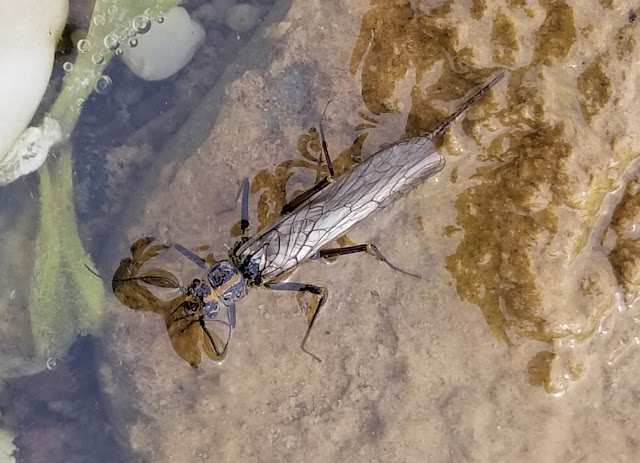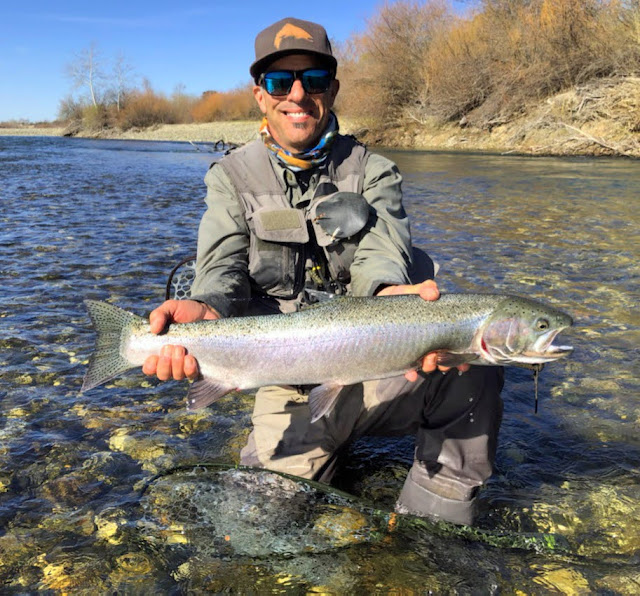I really respect a fly fishing company that takes the time to engineer a product, and does it right the first time. The Sage ESN reel is one of those products. It doesn’t take me very long to fish a particular piece of equipment and come to a conclusion of it being half ass, or superior. So for the sake of those reading this, I’ve been tight lining since the early 70’s on the Upper Sac, West Branch Feather River, and the North Fork Feather River. Back then my dad and I used Fenwick 8 foot fiberglass 5wt. rods (the yellow one), or Walton Powell 4, 5, 6wt. fiberglass rods, Pflueger reels, and short leaders that started with a 1 foot section of orange amnesia to a very heavy single fly. These days that equipment would be frowned upon for American & Euro Nymphing. But you know what? We used what we had and we caught and released thousands of fish. We made it work.
The European influence for nymphing in the last few decades has brought forth specialized rods that are longer and more sensitive in the tip to detect strikes, along with very long leaders with custom sighters. It was my fishing buddy Roger Stover who last fall introduced to me to a concept of a 40 to 50 foot leader (see diagram below) which he called Long Line Euro Nymphing. For big water like the Yuba River, it made all the difference.
As you can see, the small diameter Amnesia running line causes a major problem with regular fly reels as it likes to sneak out of the cracks and foul around the reel. I had a few my guests lose some really nice trout and steelhead due to that unfortunate situation. With the Sage ESN reel, it is full framed and the leader and competition fly line can never pass through the frame. That’s a major victory right there. The design of the Sage ESN is built around a super thin and large diameter arbor, this design now makes it easier to get fish on the reel quickly, just like a good stillwater reel. It weighs 4.93 ounces with a diameter of 3 7/8”, and a width of 1 1/16”. The operation of the reel is extremely smooth with tight tolerances which equals to pure precision and performance.
The most innovative part of the Sage ESN reel is the counter
weights that can be added to balance out any specialized nymphing rod, or even
a standard fly rod. The counter weights come in three sizes, ½ oz, 1 oz, and 1 ½
oz.
The coolest option the counter weights offer is that they
can be rotated towards the tip of the rod or towards the reel seat with minimal
effort to achieve a pin point location of balance.
Lastly the Sage ESN features a sealed carbon system drag,
which Sage states as “With its smooth engagement and consistent, dependable,
and repeatable pressure, our SCS Drag allows you to fish with confidence
knowing your tippet is protected. Proprietary high-grade US made carbon easily
and repeatedly handles high pressure and quickly dissipates the kinetic energy
of that running fish into thermal energy. Tailored configurations allow us to
create specific drag systems for each model, size, and fishing application, and
the entire system itself is sealed to keep out water, sand, grit, and salt.”
DETAILS:
-Full Frame
-SCS Drag
-One Revolution Drag Knob with 20 numbers and 40 detented
settings
-Ultra-large arbor for fast line pick-up
-Narrower spool for small-volume ESN lines
-Concave, ported arbor for greater strength and capacity
-Fully machined 6061-T6 aerospace grade aluminum
-Cold forged and tempered for superior strength and rigidity
-Hard anodized for surface protection and corrosion
resistance
-Stainless steel 1/2, 1, and 1-1/2 oz weights to adjust ideal
balance point of nymphing setup
-Ergonomic handle
-Easy conversion from left- to right-hand retrieve
-Neoprene and embroidered ballistic nylon reel case &
spare weight case
-Colors: Stealth, Chipotle
Price: $425
My overall review for this reel is…It’s a really bad ass
reel that will elevate your game while American & Euro Nymphing, and fighting fish off the
reel. There you have it, my honest opinion. I will be featuring the Sage ESN
reels matched to WildStream Searcher Nymphing rods in either the 1063 or the 1064
models for all my guide trips where you will be able fish them for extended
periods of time before throwing down the money for either one.
See you on the water…


































